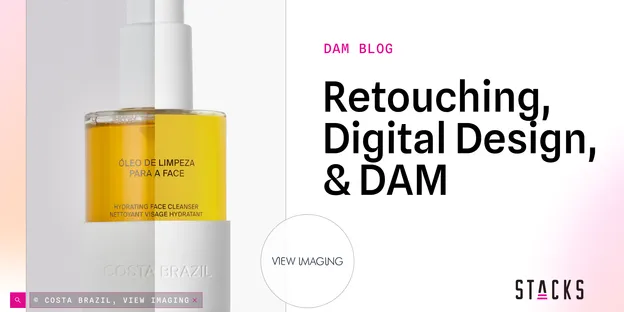In an age when brands have seemingly unlimited ways to interact with consumers, it's imperative that whatever channels they use, their identity, core values, and products are represented accurately, consistently, and in the best possible light. This kind of marketing evokes powerful emotional responses in potential customers and can result in increased sales. By creating a recognizable visual identity using the same fonts, formatting, colors, icons, logos, language, and images consistently, a brand can make a lasting impression in the market. People feel organizations with a defined brand identity are more worthy of their trust (and money!) than those that are less identifiable. It can be difficult to create and maintain a consistent brand identity through clearly enforced internal brand guidelines without utilizing a digital asset management (DAM) program for several reasons:
1. Siloed Repositories
In this case, each person creating images/graphics/documents has their own hard drive/server/cloud system. No one except them knows what's in their repositories or has access to them. To make matters worse, no one is auditing these archives for old or off-brand assets, so it's hard to tell which assets are up-to-date or accurate. Finding the right asset when needed usually wastes several people’s time searching their individual repositories for it —taking them away from the productive work which can grow your brand.
2. Chaotic Structure
If you have siloed repositories or even if you’re on a DAM platform, without the proper framework it's very difficult to maintain an organized set of on-brand and approved assets as your library grows. Searching through assets to find what you're looking for is like looking for the proverbial needle in the haystack. Files are duplicated, placed within chaotic folder structures, or are within folders with ambiguous names. You may have to click down a folder tree so long that you give up and settle for your second-best asset option or decide to create new assets. Do you want your brand’s identity to be represented by the second-best option? Or have your employees give up and decide to re-create what they're looking for by scheduling a new photoshoot, having graphics make a new logo, etc.? This not only wastes time and resources but also creates duplicates which add even more chaos to the system!
3. Inconsistent File-Naming
Even if you do find what you're looking for, you may not know it! The file name could be so obscure or inaccurate, that you overlook it.
4. Lack of Information
If your brand’s assets aren't a DAM, you're unable to add metadata to them, losing important rights and usage information about each asset and allowing you to search for them effectively and accurately oversee the approval process. Most of these reasons start as small problems at the brand’s conception and grow larger and more entangled as the brand grows.
Benefits of DAM
Here are some ways a DAM program can solve your problems and improve overall adherence to content guidelines that protect your brand from inconsistency:
1. Share Assets Easily
With the DAM platform as the single source of truth, employees across departments can feel confident that the assets within it are brand approved. They can also access assets directly from the DAM so there will be fewer emails sent with large attachments and fewer servers/hard drives/cloud services filled with duplicates and unapproved assets. With a DAM there's also the ability to share assets with external partners/vendors and have them upload assets to the system (if you give them access). For international organizations, teams can search and share assets within the DAM platform which helps maintain brand consistency globally.
2. Save Time
With a properly organized and broadly accessible DAM system, various teams can easily access brand-approved assets to create documents, presentations, materials, etc. Instead of relying on the Creative or Communications department to produce everything, each department can generate its own assets as needed with the help of templates uploaded into the DAM. This leaves the creative/communications teams free to create more templates, images, and icons for future use, and stay up-to-date on current campaigns. Depending on the DAM you use, you may also be able to download assets in multiple sizes and convert videos to different file types!
3. Apply Metadata
The ability to apply metadata such as Person Shown, Product Shown, Date Taken, Campaign, Customer Name, etc. to assets enables a DAM program to function like its own search engine. You can go directly to the search bar, type in a few keywords, and pull up the images you're looking for in seconds. There are endless ways to customize your metadata so that the DAM works in the most efficient way possible for your brand.
4. Apply Usage Rights, Legal Compliance Information, & Expiry Dates
Your assets not only have to reflect your brand’s identity, but they must also have important information attached! In addition to the metadata discussed above, details about how it can be used, who has rights to it, and how long it can be used can and should be applied to every asset in the DAM at some point in its lifecycle. You should set up your DAM so that each asset added to it is properly approved by an admin. This creates a secure and streamlined DAM that minimizes the danger of copyright snafus.
5. Reporting
Which assets are used frequently? Which are unused? Which are unused and should be used more? Who is using assets effectively? These kinds of questions can all be answered with DAM reports. Depending on your DAM platform, there are a variety of reports you can run that permit you to see how the DAM is being used. They can tell you where resources are being used and where you need to focus more energy. Reports also provide important feedback on which assets lead to actual sales! They can help create a roadmap to success or show where pitfalls are hurting your brand identity.
6. Security
Most DAMs are protected by rigorous security protocols. The ability to make sure your assets are safe and accessible only to the people you approve is vital in this age of hacks and data breaches. It also ensures that an employee in a rush doesn’t grab an inappropriate asset for the channel or moment they are posting it by mistake. The peace of mind you have when your assets are in a DAM is well worth the price of admission.
7. Agility
A brand’s identity isn’t static. There may be re-brands in the future due to new campaigns and, hopefully, the expansion of the brand. With a DAM system, it's easy to retire or expire old assets or push a large upload of new assets and feel secure that the assets which are available are all appropriate for your brand’s identity at that moment. Without a DAM program, the time wasted trying to get employees to change the assets they're using could cause your initiative, campaign, or rebrand to stall and lose momentum. This is a lost opportunity and directly affects your brand’s consistency and thus its sales, potential partnerships, and expansion.
Creating and maintaining trust with consumers is the backbone of building any good brand. Building up that trust through a consistent brand identity and enforced brand guidelines is a major step in securing a customer’s patronage. A DAM solution can save you time and many headaches by streamlining processes, creating order, and putting your brand’s best assets at the forefront. If you would like more information about how DAM can help your brand or are feeling overwhelmed by the thought of taking your brand’s assets from their current chaos to an orderly DAM, reach out to the experts here at Stacks. We’d love to help!




